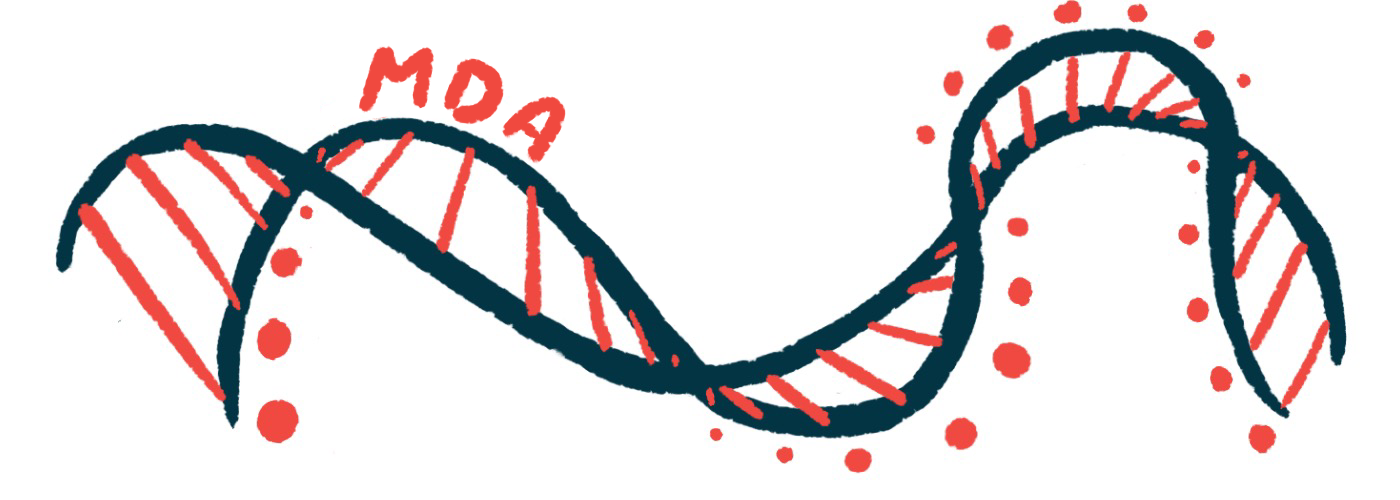MDA 2023: SRP-9001 shows long-term gains in DMD patients
Sarepta shares trial data update about its Duchenne MD gene therapy candidate

Four boys with Duchenne muscular dystrophy (DMD) who were treated with the gene therapy candidate SRP-9001 (delandistrogene moxeparvovec) in a proof-of-concept clinical trial continue to show improvements in motor function four years after dosing.
That’s according to new data discussed this month at the Muscular Dystrophy Association’s MDA Clinical & Scientific Conference, held in Texas and virtually, in the presentation, “Long-term safety and efficacy in patients with DMD 4 years post-treatment with delandistrogene moxeparvovec: a Phase 1/2a study.” The work was funded by SRP-9001’s developer Sarepta Therapeutics.
DMD is caused by mutations in the gene that provides instructions for making the protein dystrophin, which is essential for muscle health. SRP-9001 is designed to deliver a gene encoding micro-dystrophin — a shortened, but functional, version of the protein — to muscle cells.
SRP-9001 is currently up for potential approval in the U.S., with a decision expected before the end of May.
Sarepta’s application was supported, in part, by data from a proof-of-concept Phase 1/2 clinical trial (NCT03375164), in which four boys with DMD, ages 4 to 6, were given a single intravenous infusion of SRP-9001.
Previous data from the trial showed these boys experienced improvements in their motor function and walking ability three years after dosing. At MDA, researchers shared four-year data from the study, at which point the group’s mean age was 9.2.
Scores on the North Star Ambulatory Assessment (NSAA), a standardized measure of motor function, improved by an average of seven points at four years after dosing compared to the start of the study, from 20.5 to 27.5. This markedly contrasts with the typical progression of DMD, where NSAA scores usually decline over time starting after age 6.
Other measures of motor function also generally improved in the four boys during the four years after treatment. A particularly strong effect was seen on the boys’ ability to climb stairs, which improved about 60%. According to Jerry Mendel, MD, a researcher at Nationwide Children’s Hospital, in Ohio, who presented the findings, this is likely due to the treatment helping to strengthen muscles in the hips that usually are hit especially hard in the early stages of DMD.
“There was some improvement, but most of all … no loss of function during that four-year period,” Mendel said.
Comparing the data
To contextualize the findings, Mendel compared data from these four patients with external data from DMD patients who did not receive gene therapy. In the external group, NSAA scores had declined by more than three points during a similar four-year timeframe. By the end of the four years, the difference between the groups was more than nine points. This is a difference “far exceeding the threshold for a clinically meaningful difference,” the researchers wrote in their abstract.
Taking all the functional assessments together, “there was no question about efficacy,” Mendel said. He noted that two patients who now have reached five years of follow-up are continuing to show sustained improvements in motor function.
The long-term data showed no new safety signals. The most common side effect related to treatment was vomiting, which usually occurred within the first week after gene therapy treatment and was generally easy to manage, according to Mendel.
At another presentation at the MDA conference, Crystal Proud, MD, a neurologist at Children’s Hospital of The King’s Daughters, in Virginia, discussed data from a Phase 1b open-label clinical trial called ENDEAVOR (NCT04626674), which also is evaluating SRP-9001 in DMD patients.
The talk was titled “One-year data from ENDEAVOR, a Phase 1b trial of delandistrogene moxeparvovec in patients with DMD.”
Proud shared data from the first group of patients treated in the trial, which included 20 children ages 4 to 7 who were able to walk. All of the patients were given a single dose of SRP-9001, at a dosage slightly lower than was used for the four patients in the proof-of-concept study.
Plans for commercial version
The gene therapy being used in this study is made through the same process that Sarepta plans to use to make a commercial version if SRP-9001 eventually is approved.
Results showed that the average NSAA score increased by four points in the year following SRP-9001 treatment, a significant improvement compared to data from an external group of similar patients.
“We see that treatment with this intended commercial process [SRP-9001] led to noticeable improvements in motor function over this time period,” Proud said.
Measures of the time it took patients to rise from a lying position or walk 10 meters (almost 33 feet) tended to decrease in the year following SRP-9001. These measures usually increase in DMD boys of this age as the hips become weaker.
Analyses of patients’ tissues showed that the micro-dystrophin protein was being expressed, suggesting the therapy is working as expected.
Data from these patients have identified no new issues related to safety, so far: as in the initial study, the most common side effect was vomiting. There were two serious side effects reported, one instance of severe vomiting and one of liver damage necessitating hospitalization.
“Findings from cohort 1 suggest a similar clinical benefit from the intended commercial process of [SRP-9001] as has been observed in Phase 1 and 2 trials of clinical process material,” Proud concluded.







